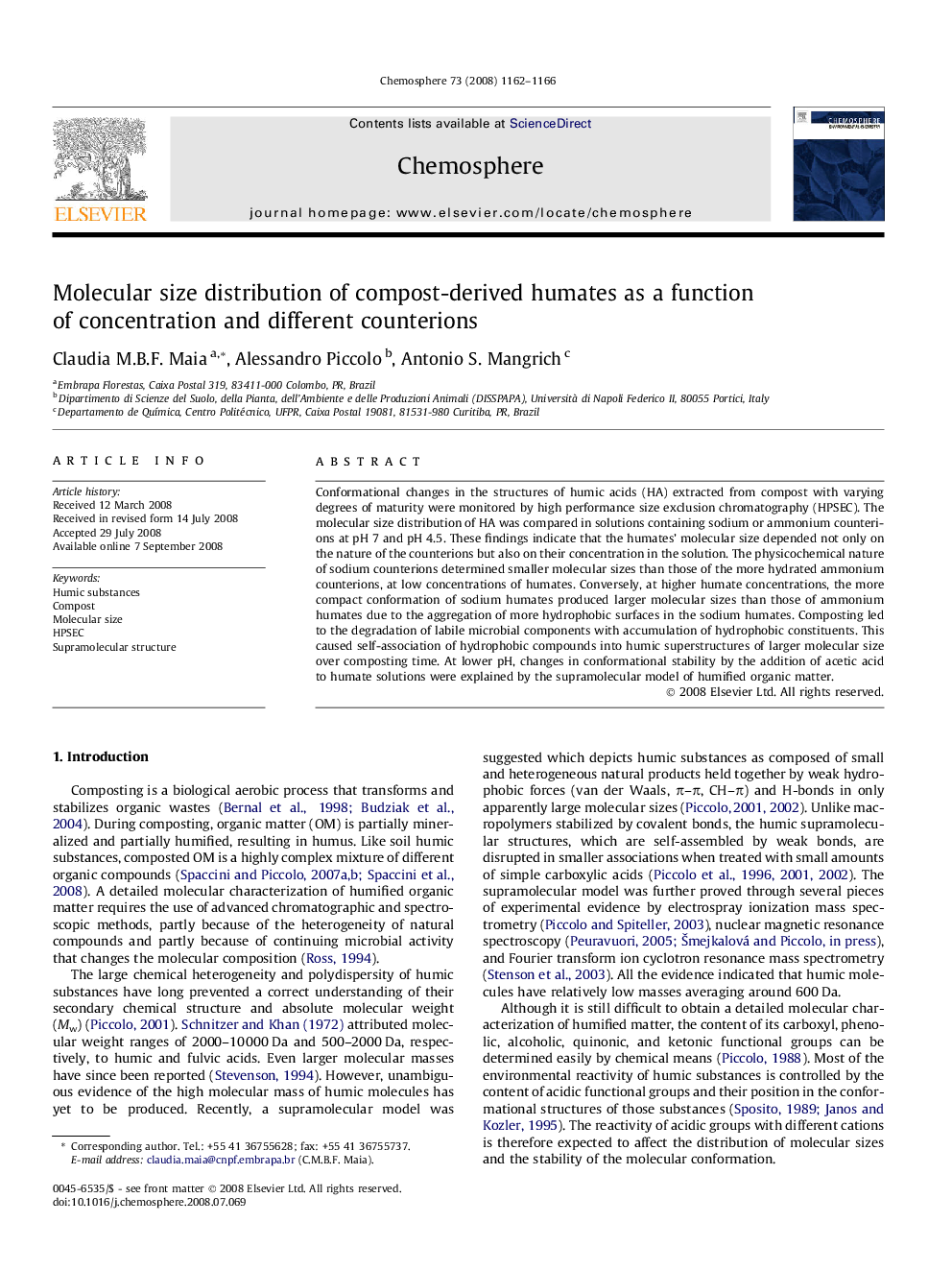| Article ID | Journal | Published Year | Pages | File Type |
|---|---|---|---|---|
| 4413806 | Chemosphere | 2008 | 5 Pages |
Conformational changes in the structures of humic acids (HA) extracted from compost with varying degrees of maturity were monitored by high performance size exclusion chromatography (HPSEC). The molecular size distribution of HA was compared in solutions containing sodium or ammonium counterions at pH 7 and pH 4.5. These findings indicate that the humates’ molecular size depended not only on the nature of the counterions but also on their concentration in the solution. The physicochemical nature of sodium counterions determined smaller molecular sizes than those of the more hydrated ammonium counterions, at low concentrations of humates. Conversely, at higher humate concentrations, the more compact conformation of sodium humates produced larger molecular sizes than those of ammonium humates due to the aggregation of more hydrophobic surfaces in the sodium humates. Composting led to the degradation of labile microbial components with accumulation of hydrophobic constituents. This caused self-association of hydrophobic compounds into humic superstructures of larger molecular size over composting time. At lower pH, changes in conformational stability by the addition of acetic acid to humate solutions were explained by the supramolecular model of humified organic matter.
